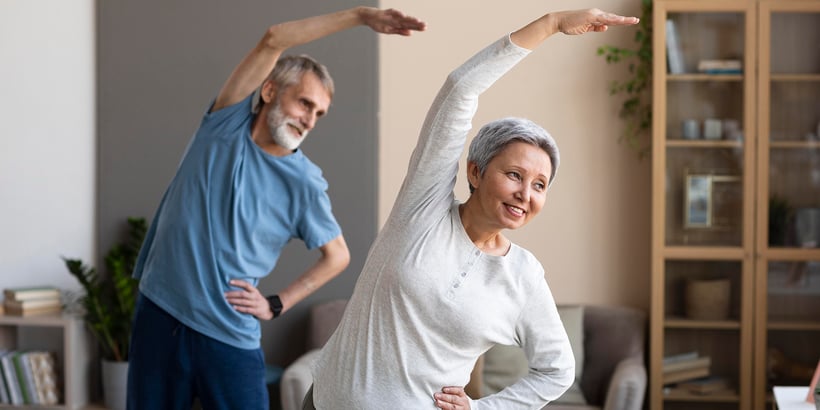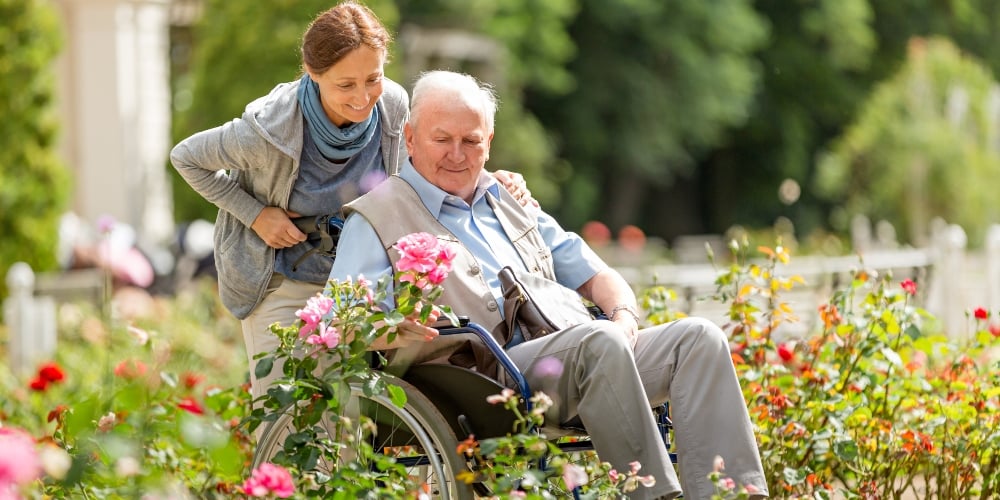
When you have arthritis, moving your body may be the last thing you want to think about. But the experts at Flagstaff Bone and Joint say low-impact exercise can help keep you active and healthy.
It’s normal to be worried that moving will harm your joints and cause more pain. Sometimes pain is your body’s way of saying, “Take it easy!”
While it’s important to listen to your body, research shows that exercise can improve your joint pain and stiffness and is considered the most effective non-drug treatment for osteoarthritis. Although it may be uncomfortable to get started, not moving actually makes arthritis pain worse.
Here are some frequently asked questions seniors and their family members have about what to do and what not to do when it comes to arthritis and exercise.
What Are the Best Types of Exercise If I Have Arthritis?
If you have osteoarthritis, try walking, aquatic exercises, range-of-motion and flexibility exercises, and strengthening exercises.
If you have rheumatoid arthritis, consider mind-body practices, such as yoga, tai chi, qigong, and walking meditation, which not only decrease joint pain and stiffness but also improve relaxation and reduce stress.
Are There Certain Types of Exercise I Should Avoid?
For arthritis that affects the joints, avoid running, jogging, jumping rope, high-impact aerobics, or any other exercise where both feet are off the ground at the same time.
How Do I Know When to Take a Break and When to Keep Moving?
There are definitely times when it’s best to rest. If you’re feeling “bad” pain — the type that is specifically and acutely hurting an arthritic joint — take a break. You’re looking for the “good” pain of muscles that have had a healthy workout.
When your joints ache, experiment with applying heat or cold for 15 minutes at a time. For example, if you have morning stiffness, applying a heating pad to the aching joints before you get up or taking a hot bath or shower can ease pain. If you have painful and swollen joints, try using ice packs or a bag of frozen corn or peas to help numb the area.
Another way to reduce arthritis pain and stiffness is massage. Research shows that people with arthritis in the knee had more flexibility and range of motion and less pain after getting weekly Swedish massages for a few months.
Apply heat to the painful joint to warm the area first, then gently rub and massage the area. Adding lotions or oils to reduce friction can also feel good.
After you’re feeling better, you should get up and get moving again.
How Can I Protect My Joints?
The more pressure you put on weight-bearing joints, such as hips and knees, the more pain you’ll feel. Research shows that losing just 1 pound takes 4 pounds of pressure off each knee. If you have a few pounds to shed, consider adopting a healthier diet and increasing exercise to help take a lot of pressure off your joints.
If you have arthritis in your feet or knees, try placing wedges or insoles in your shoes. The more support your shoe has, the more it will protect your joints and provide shock absorption while walking. Canes, rolling walkers, and knee braces can also help relieve painful pressure and help you move more freely.
A Holistic Approach to Treating Arthritis
When Gayle first moved into a Highgate Senior Living community, she needed a lot of assistance. Care partners helped with every activity of daily living: showering, dressing, using the restroom, getting in and out of bed.
She had a hard time in the kitchen, too. The microwave was too high, and her arthritis pain made it so she couldn’t comfortably use the knob controls for adjusting the cooking time and power settings. Highgate gave her a microwave with push buttons instead of turn knobs and set it on the countertop so she could reach it, but recently, Gayle has been gaining her independence back: She doesn’t need the microwave anymore because she can actually turn the knob, and now, care partners only help with dressing and grooming and showers twice a week.
The Highgate team attributes this to the newfound purpose in Gayle’s life. She exercises, visits with other residents, reads the paper, goes for strolls, and welcomes new residents — all activities that may seem like everyday activities to some, but are difficult when living a life of isolation and chronic pain. Ultimately, assisted living has helped Gayle gain independence back.
Our community offers a whole lot more than just a place to lay your head at night. Our signature programs include a holistic approach to health and wellness, purposeful living opportunities through social and recreation programs, and nutritious and delicious dining options.
Download our Signature Programs Fact Sheet to learn more.





